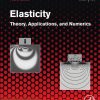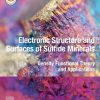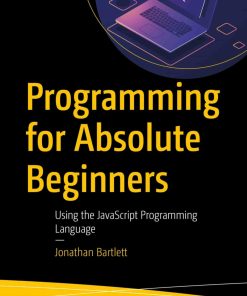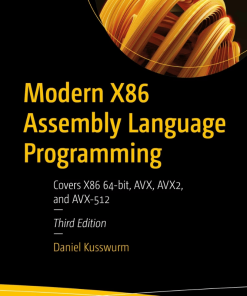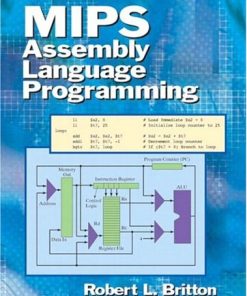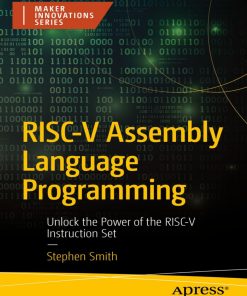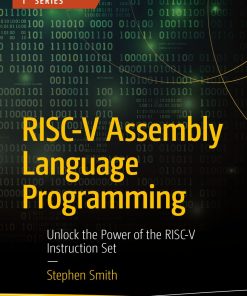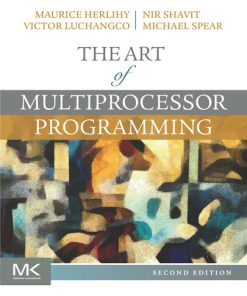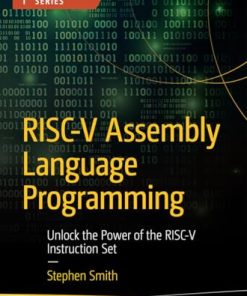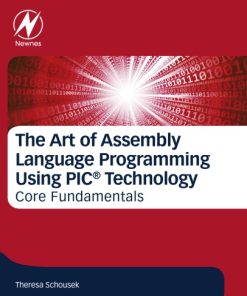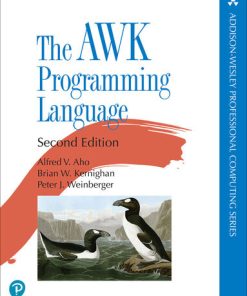(EBook PDF) The Art of Assembly Language Programming using PIC Technology. Core Fundamentals 1st edition by Theresa Schousek 0128126183 9780128126189 full chapters
$50.00 Original price was: $50.00.$25.00Current price is: $25.00.
The Art of Assembly Language Programming using PIC Technology. Core Fundamentals 1st edition by Theresa Schousek – Ebook PDF Instant Download/DeliveryISBN: 0128126183, 9780128126189
Full download The Art of Assembly Language Programming using PIC Technology. Core Fundamentals 1st edition after payment.
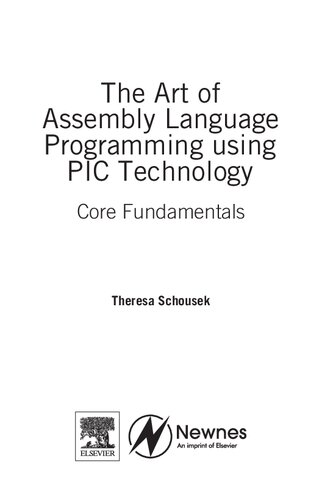
Product details:
ISBN-10 : 0128126183
ISBN-13 : 9780128126189
Author: Theresa Schousek
The Art of Assembly Language Programming using PIC® Technology thoroughly covers assembly language as used in programming the PIC® Microcontroller (MCU). Using the minimal instruction set, characteristic of most PIC® products, the author elaborates on the nuances of how to execute loops. Fundamental design practices are presented based on Orr’s Structured Systems Development using four logical control structures. These control structures are presented in Flowcharting, Warnier-Orr® diagrams, State Diagrams, Pseudocode, and an extended example using SysML®. Basic math instructions of Add and Subtract are presented, along with a cursory presentation of advanced math routines provided as proven Microchip® utility Application Notes.
The Art of Assembly Language Programming using PIC Technology. Core Fundamentals 1st Table of contents:
Chapter 1: Introduction
Practical Applications
Why Assembly?
Core Families (“Baseline,” “Midrange,” “Enhanced Midrange,” “High Performance”)
Baseline
Midrange
Enhanced Midrange
High Performance
Data Sheet—Walk Through
Straight Line Program Implementation
Think of a Number
Double It
Add 10 (Decimal)
Halve It
Subtract Original Number
Compare Output to 5
Looped Code Implementation
Microchip Tools
Microchip Microcontroller Course Information
Jargon Note—Italics
Word Search
Binary Puzzle
Further Reading
Chapter 2: Microchip 8-bit architecture
The Microprocessor
System Clock
Execution Cycle
Instruction Flow Pipelining
Bus for Data and Program
Hardware Interfaces
Input/Output Interface
Comparator Interface
Timer 0 Interface
Flash Programming Interface
Oscillator Output
Master Clear Reset
Hardware Organization of Memory Address Space
Data Memory and File Registers
Arithmetic Logic Unit (ALU) and the W Register
Prototyping
Word Search
Puzzle: Oscillator
Further Reading
Chapter 3: Instruction sets
Instruction Set Comparison for PICmicro 10F, 12F, 16F, 18F Controllers
Common 33 Instruction Set for PICmicro Controllers
Instructions
Registers
Ports
Timers
Addressing
Direct
Indirect
Indexed/Relative
Code Example
Paging Consideration
Word Search: Instruction Set
Puzzle: Instruction Set
Further Reading
Chapter 4: Beginning code
Subroutines
Macros
Elementary Programs
ACC Convention
8-Bit Data Transfer
16-Bit Data Transfer
8-Bit Addition
8-Bit Subtraction
8-Bit Multiply by Two (Rotate Left 1 Bit)
8-Bit Multiply by Four (Shift Left 2 Bits)
8-Bit Divide by Two (Rotate Right 1 Bit)
Mask Off Most Significant 4 Bits
Mask Off Least Significant 4 Bits
Clear a Memory Location
Set a Memory Location to All Ones
Find Larger of Two Numbers
Find Smaller of Two Numbers
Program Counter Addressing
Application Notes
Interrupts and Jump Tables (AN514)
Stacks (AN534)
Calculate Timing
Word Search: Beginning Code
Puzzle: Number Square
Further Reading
Reference
Chapter 5: Looping code
Loops Introduction
8-Bit Sum of Data
Looped Code Example
Partial Straight Line Code Example
Macros for Page and Bank Switching (AN586)
Long Conditional Branch Vectors (AN581)
Word Search: Loops Code
Puzzle: Loops Code
Further Reading
Chapter 6: Embedded control fundamentals
Embedded Control
Electrical Wiring Diagrams
Breadboards
Basic Input and Output (I/O)
Specialized Input/Output
Timer Modules and Registers
Hardware Alone
Hardware and Software
Software Alone
Development Boards
Word Search: Embedded Control
Puzzle: Flustered
Further Reading
Chapter 7: Fundamentals of good practice
Structured Programming
Software Design Patterns
Reusable Code Guidelines
Ordered Lists
Ordered Lists Example
Structured Systems Development (SSD): Four Basic Structures
Programming Flowcharts
Warnier-Orr Diagrams
State Machine Diagrams
Pseudocode
SysML
SysML Standards and Tools
SysML Language Overview
SysML Example
Word Search: Program Design and Development
Puzzle: Spiral
Further Reading
Chapter 8: Data and control structures
Assembly Language Concepts
Config Word
Using DEFINE
Program Structures
Subprograms
Subroutines
Macros
Procedures
Functions
Recursive Procedures
Termination
Data Structures
Handling Data in ASCII
Character Coded Data
Character Operations
Example: Length of a String of Characters
Character Operations
Example: Pattern Match
Control Structures
Function
Sequence
Alternation (or Multiple Selections)
Decision Tables
Repetition (or Iteration)
Word Search: Data Structures
Puzzle: Jigsaw Sudoku 66h
Further Reading
References
Chapter 9: Logic and numbering systems
Boolean Algebra
Logical Operators
AND/NAND gates
IOR/NOR gates
XOR/XNOR gates
Gray code
NAND, the universal operation
Polynomial Systems
Decimal System
Binary, Octal, Hexadecimal, Decimal
Binary System
Octal System
Hexadecimal System
Mixed Radix Systems
Multibyte Integers
Hexadecimal to Binary Conversions
Little-Endian vs. Big-Endian
Signed and Unsigned Integers
Signed and Unsigned
Sign and magnitude
One’s complement
Two’s complement
Floating Point
BCD as a Type
Binary Coded Decimal
ASCII—Single-Byte Characters
Ascii
Unicode—Multibyte Characters
Unicode
Word Search
Puzzle: Diamond 22h
Further Reading
Chapter 10: Mathematical operations
Include Mathematical Routines
Application Notes in Standard and High Performance Microprocessors
Single and Double Precision Arithmetic
Signed Arithmetic
Select Optimization: Speed or Memory
Conditional Assembly
HI/LO Conventions
Specific Math Utility Routines
Advanced Macro Features
AN526e Utility Math Routines
AN544d Binary Coded Decimal and Fixed Point Division
AN575 IEEE 754 Compliant Floating Point Routines
AN617 Fixed Point Math Routines
Addition
Subtraction
AN660 Trigonometric and Complex Math Routines
Featured 8-Bit MCU Boards
Automotive Networking Development Board
Curiosity Development Board
Curiosity High Pin Count (HPC) Development Board
Explorer 8 Development Kit
PICDEM Lab II Development Platform
Word Search: Mathematical Operations
Puzzle: Number Tower
People also search for The Art of Assembly Language Programming using PIC Technology. Core Fundamentals 1st:
the art of assembly language pdf
the art of assembly language 2nd edition pdf
the art of assembly language
the art of assembly pdf
the art of assembly
Tags:
The Art,Assembly,Language Programming,PIC Technology,Core Fundamentals,Theresa Schousek
You may also like…
Computers - Programming
Computers - Programming
Computers - Hardware
Computers - Programming
Computers - Programming
RISC-V Assembly Language Programming Stephen Smith 1st edition
Computers - Computers - General & Miscellaneous
Computers - Programming


